Understanding the Branches & Records
HONORING THE LIVES AND LEGACIES OF THOSE WHO SERVED IN WWII
Explain what kinds of records were kept by each branch of service:
- Army & Army Air Forces – Official Military Personnel Files, morning reports, rosters
- Navy & Coast Guard – muster rolls, deck logs, service cards
- Marines – unit diaries, casualty cards
Click here for a sample chart for military and wartime keepsakes.
Military Branch Overview
A quick reference guide that explains what each branch managed during WWII:
- Army – largest branch; includes ground forces and Army Air Forces (pre-1947 Air Force)
- Navy – sea-based operations, including surface vessels and submarines
- Marine Corps – amphibious operations, often under Navy command
- Coast Guard – served under Navy control during wartime
- Merchant Marines (Optional Add-On) – civilian mariners under military contract
Click here for a guide to each military branch.
U.S. Military Branch Structure: Then Versus Now
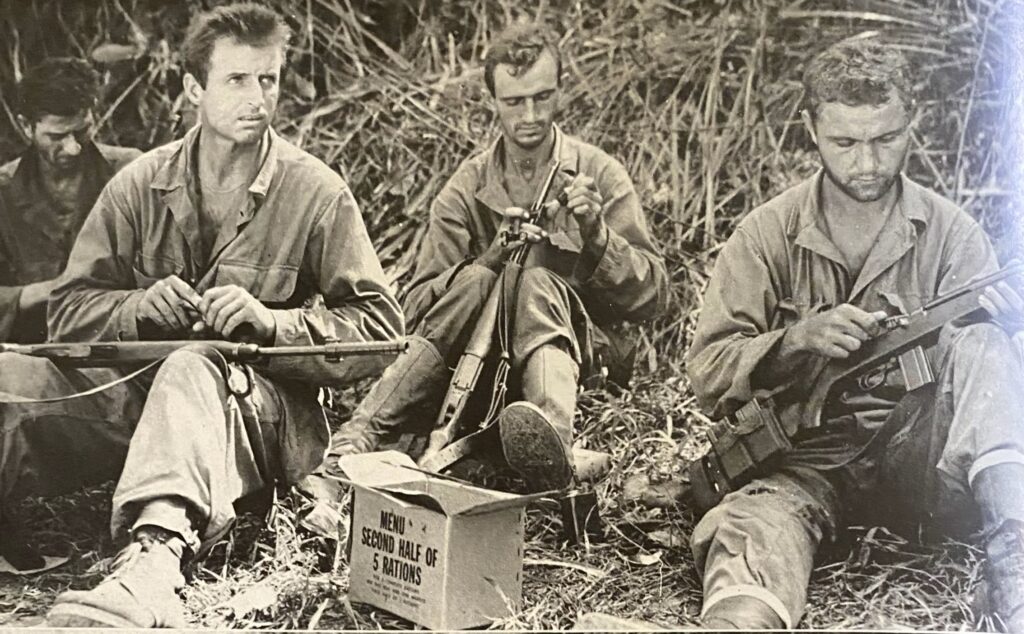
1940s (World War II Era)
- U.S. Army – Primary land force; included infantry, armored, and airborne divisions.
- U.S. Navy – Dominant sea power; operated fleets across the Atlantic and Pacific.
- U.S. Marine Corps – Amphibious assault force under the Department of the Navy.
- U.S. Army Air Forces (USAAF) – Aerial warfare branch under the Army; not yet independent.
- U.S. Coast Guard – Maritime security and rescue; operated under the Navy during wartime.
Today
- U.S. Army – Land operations; includes infantry, armor, aviation, and cyber units.
- U.S. Navy – Sea dominance; includes aircraft carriers, submarines, and naval aviation.
- U.S. Marine Corps – Rapid-response amphibious force; still under the Navy.
- U.S. Air Force – Independent since 1947; handles air and space operations.
- U.S. Space Force – Established in 2019; focuses on space-based defense and operations.
- U.S. Coast Guard – Maritime law enforcement and rescue; under Homeland Security in peacetime, Navy in wartime.
Click here for a sample chart.
Common WWII Record Types
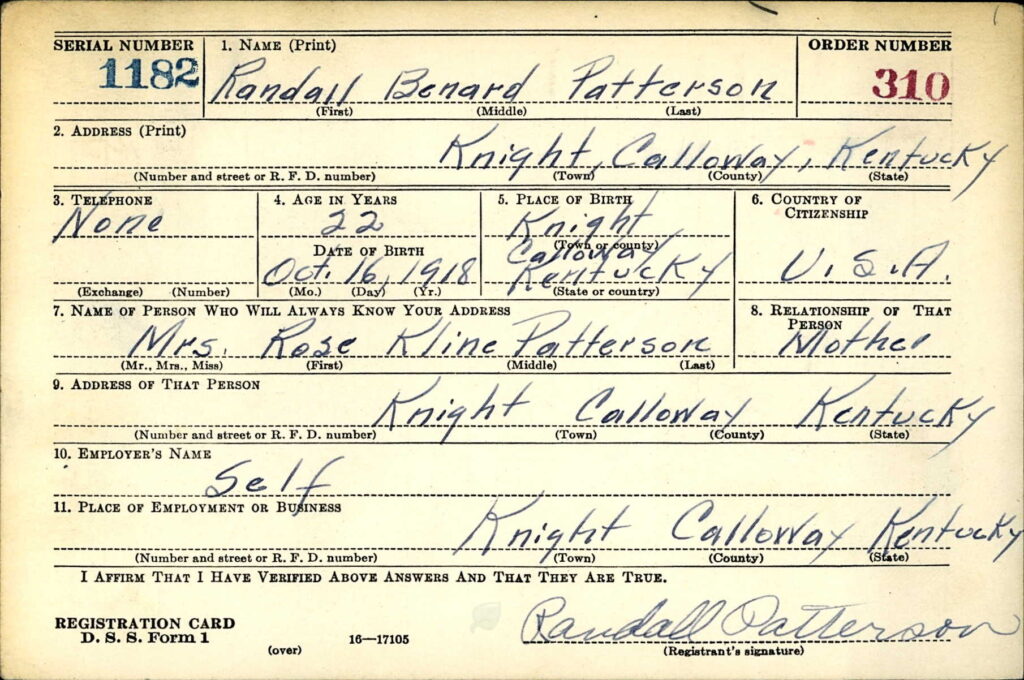
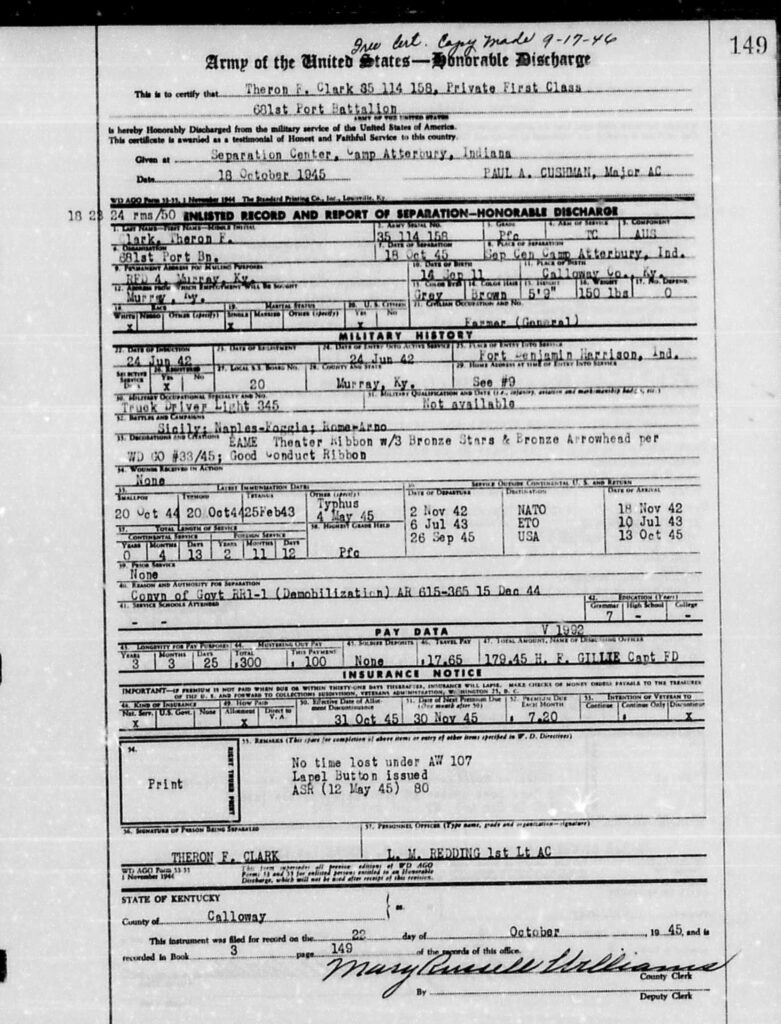
| Record Type | What It Shows | Where to Find It |
| Enlistment Record | Name, serial number, enlistment date / place, education, occupation | NARA, Fold3; Ancestry.com; My Heritage |
| Discharge / Separation Papers | Final rank, unit, dates of service, awards, battles | Often held by family; NARA or VA offices; Calloway County Clerk's Office |
| Morning Reports / Muster Rolls | Unit assignments, changes in status (injury, KIA, leave) | NARA or unit archives; Fold3 |
| Unit Histories / War Diaries | Campaigns, unit movement, engagements | U.S. Army / Marine Corps history offices; Fold3 |
| Draft Registration Cards | Date of birth, address, employer, next of kin | NARA; local archives; Fold3; Ancestry.com; My Heritage |
| Medal Citations | Details of awards and heroic actions | May be included in OMPFs or service award databases |
| POW / Casualty Reports | Capture, internment, death, burial info | NARA; DPAA; Fold3 |
Click here for a sample Guide.
Click here for where to find the record.
Important Note: 1973 NPRC Fire & Military Record Loss
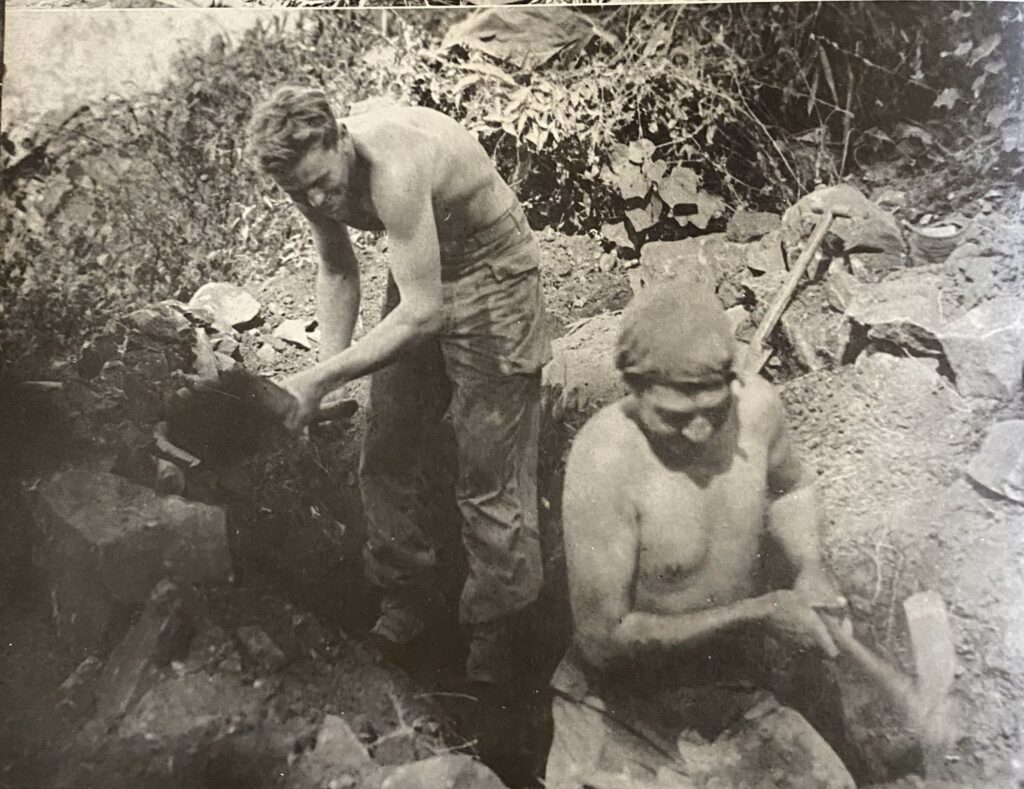
In 1973, a devastating fire at the National Personnel Records Center (NPRC) in St. Louis destroyed approximately 16–18 million Official Military Personnel Files (OMPFs), primarily affecting Army records from 1912–1960 and Air Force records from 1947–1964. If you’re researching a veteran whose records may have been lost, don’t lose hope—there are still valuable ways to reconstruct their service history.
Alternative Research Paths:
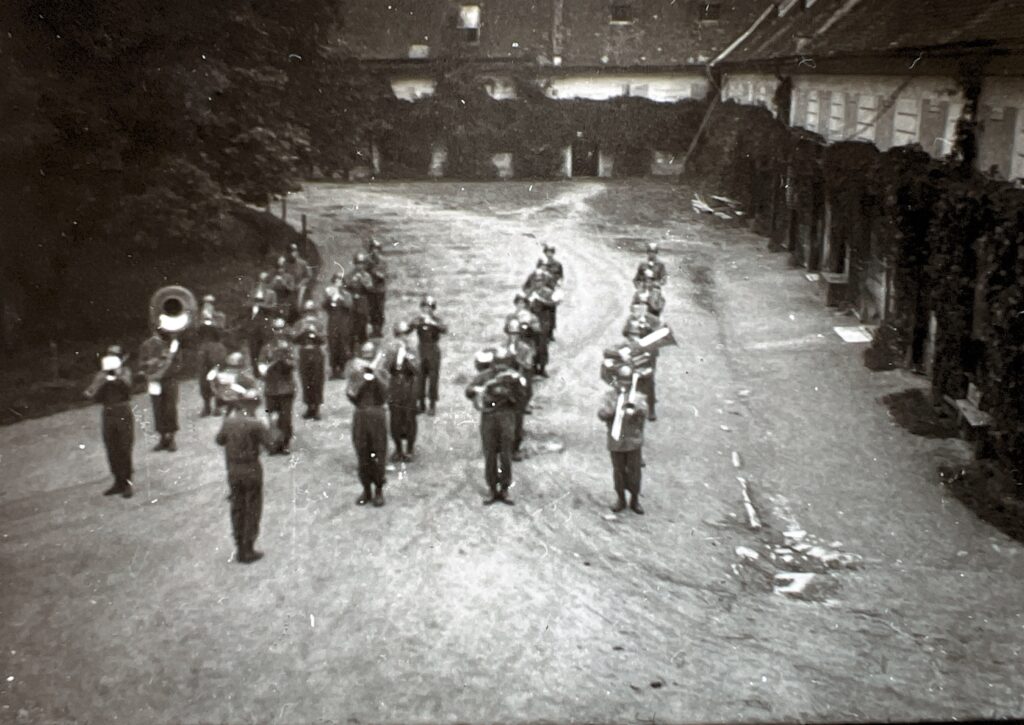
These are the kinds of records kept by each branch of service:
- Unit Records & Morning Reports: These can provide details about a veteran’s daily activities, assignments, and movements.
- Hospital Admission & Treatment Records: Especially useful if the veteran was wounded or hospitalized during service.
- VA Claims Files: Veterans who filed for benefits may have detailed service information preserved in their VA records.
- Draft Registration Cards & Discharge Papers: Often retained by families or local courthouses.
- State Archives & Veterans Organizations: These may hold duplicates or related documentation.
If you’re unsure where to begin, contacting the NPRC or a local Veterans Service Officer (VSO) can help guide your search.
Click here for a sample chart.
Sample Document Walkthrough
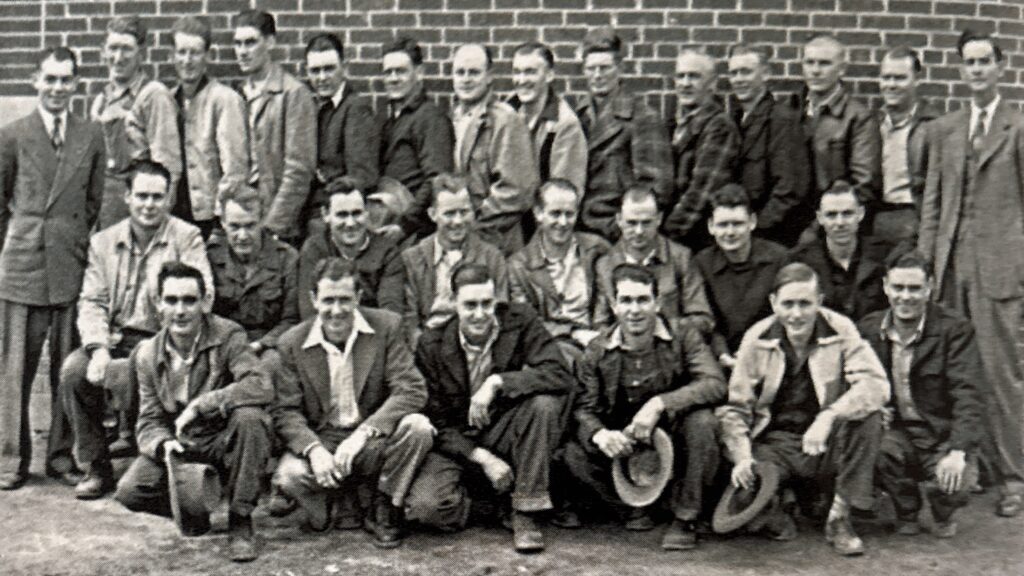
Pick one representative record—say, a Discharge Paper—and mark it up like a map:
- Highlight terms like “Theater of Operations,” “Military Occupational Specialty,” “Decorations,” and “Service Number.”
- Add callouts: “This tells you where they served,” or “This medal might help you find their campaign timeline.”
Click here for a sample Walkthrough Document.
Research and photographs provided by volunteer members of the Calloway County Genealogical and Historical Society.
Contact: cckyghs@gmail.com
